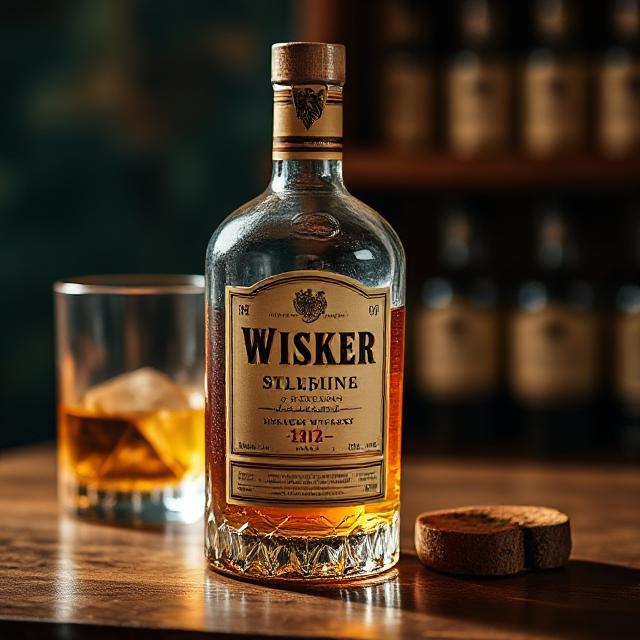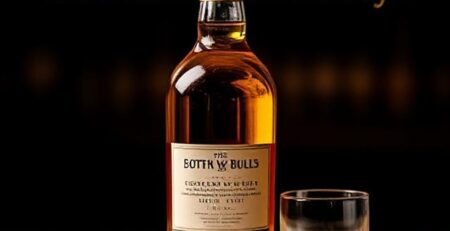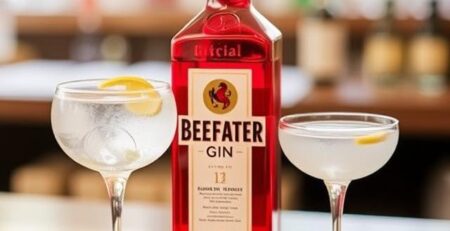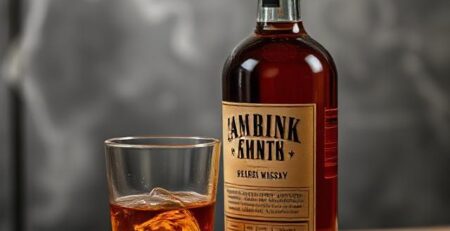Indri Single Malt Whisky: How India Is Redefining the Global Whisky Game
1) What is the speciality of Indri Single Malt?
The Indri Single Malt brand is part of the Piccadily Agro Industries Ltd stable and has made notable strides in the Indian whisky market. What sets it apart:
- It is described as India’s fastest-growing single malt whisky for two consecutive years.
- In 2024, Indri sold approximately 2.04 million bottles (1.70 lakh nine-litre cases).
- It achieved the distinction of being the largest-selling single malt in India.
- The brand uses Indian six-row barley, local production in Haryana (near Yamuna basin), and triple-cask maturation (ex-bourbon, ex-French wine, ex-PX sherry) for certain variants like the Indri-Trini.
- The climate and terroir in India, especially Northern India, allow for accelerated maturation compared with cooler climates, enabling robust flavour in relatively younger whiskies.
So, the speciality lies in being a home-grown Indian single malt that has scaled in consumption, achieved distinct flavour profiling using India’s climate and ingredients, and broken records in growth.
2) Why should India, a country that “drinks more whisky than anyone,” be making single malts?
When we say “India drinks more whisky than anyone,” the reference is to the huge size of the Indian whisky/IMFL market. For years, India has leaned heavily on domestic spirits, blends, and imported Scotch. But the shift to premium and single malt categories is relatively new.
Key points:
- Indian whisky consumption is massive, but single malt penetration has been low until recently. Indian consumers were often more motivated by volume and value than premium expression.
- The success of brands like Indri signals that Indian consumers are willing to embrace premium domestic malt whiskies, not just imported ones.
- From a production perspective, India has advantages: local barley, hotter maturity climates, cost-efficient manufacturing, growing consumer base, export potential.
- Yet there are challenges: scotch whisky legacy, global brand perception, ageing infrastructure, regulatory fragmentation, and consistency in quality.
- Indri is making the case that India “can make it” — meaning it can produce credible single malts that compete globally and domestically.
So, yes. India’s consumption volumes give a unique domestic launchpad for brands like Indri — but scaling quality and global recognition remains a critical task.
3) Who owns Indri Single Malt?
The Indri brand is owned and produced by Piccadily Agro Industries Ltd, which is based in India. The distillery for Indri is in Indri village, Haryana (from which the brand gets its name).
Key leadership mention:
- The CEO (IMFL – Indian Made Foreign Liquor) of Piccadily Agro Industries Ltd commented publicly on the brand’s growth.
- According to press filings, the distillery uses the six-row Indian barley grown in Rajasthan and distills in Indri, Haryana.
Therefore, while the brand name is “Indri Single Malt”, the owner is Piccadily Agro Industries Ltd, operating via their Indri distillery.
4) What is the revenue/scale of Indri Single Malt?
Exact revenue figures for Indri (or Piccadily’s single malt segment) may not be publicly disclosed in fine detail, but we have strong indicators of scale:
- In 2024, the brand sold about 2.04 million bottles (1.70 lakh nine-litre cases).
- Specifically: 1,24,000 nine-litre cases (domestic) and 46,000 cases exported.
- The brand is described as “fastest-growing Indian single malt” and “largest-selling single malt in India”.
- The firm’s composite production infrastructure (Piccadily Distilleries) also handles ethanol and IMFL, not just single malts.
Thus, while the exact revenue figure (in ₹ crores) isn’t publicly cited, the volume scale is significant and growth trajectory strong. For a premium single malt brand in India, selling 2 million bottles in a year is a major milestone.
5) What is the market valuation / competitive positioning of Indri Single Malt?
While we may not find a public “valuation” number for just the Indri brand alone, from corporate disclosures and market commentary:
- Indri has overtaken many imported single malts in India and is vying for global recognition.
- The brand has been certified by the IWSR (International Wine & Spirits Record) as the “Number 1 Malt Whisky in India”.
- The success of Indian single malts, including Indri, is viewed as a structural shift in premium spirits in India: global analysts note Indian malts are taking down Scotch on value and distinctiveness.
- Given the scale of sales (2 million bottles) and domestic + export growth, the brand’s value goes beyond just bottle sales—it carries brand equity, export potential, award recognition, and category-leadership.
Therefore, while a specific valuation figure (e.g., ₹ X crores) is not available publicly for Indri alone, its market position as India’s largest single malt and growing global proof means it is highly significant.
6) What’s driving Indri’s rapid rise—and what challenges remain?
Driving Factors
- Affordability + Premium Positioning: Indian consumers increasingly want premium spirits but at relatively lower cost than imported Scotch; Indri offers that.
- Domestic Brand, Domestic Pride: A home-grown single malt doing well resonates with consumers and differentiates from foreign brands.
- Effective Production Leverage: Using Indian barley, Indian distilling, Indian climate (faster maturation) gives cost advantage and distinctive flavour.
- Global Reach & Recognition: Exports and awards help elevate brand credibility (e.g., “Best World Whiskey” awards).
- Scale in volume: 2 million bottles in a year puts the brand at meaningful commercial scale.
Challenges
- Ageing & maturity perception: Single malts globally use age statements (12, 15, 18 years) as markers of quality—Indian brands still catching up.
- Regulation, tax & state-by-state liquor laws in India: Distribution fragmentation, high duties, state variances hamper speed and margin.
- Global export competition & brand building: Scotch, Japanese, Taiwanese malts have heritage; Indian malts must build brand credibility overseas.
- Quality consistency & consumer trust: Rapid scaling must maintain standards; for premium segment, reliability matters.
- Supply chain & barley sourcing: Ensuring consistent high-quality non-hybrid barley, climate conditions, maturation space.
So, the rise is strong—but sustaining and globalising it requires careful strategy.
7) How does Indri compare to other Indian single malts and global malts?
Comparison with Indian peers
- Brands like Amrut, Rampur, Paul John have long legacy in Indian single malts. Indri now out-sold many imported single malts domestically.
- Indri leverages triple-cask maturation (ex-bourbon, wine, sherry) which gives flavour richness similar to some Scotch blends.
- Its fastest-growth tag emphasizes momentum: for instance, Indian malts overall are said to have grown sharply while imports declined.
Comparison with global malts
- While Scotch brands may command higher price points, heritage and age statements, Indian malts like Indri offer competitive value and flavour profile adapted to tropical climate.
- Indian climate accelerates maturation, but also increases “angel’s share” (evaporation) – a structural difference.
- Global recognition (awards) is still less for Indian malts, but improving rapidly.
8) What variants & expressions does Indri offer?
From public disclosures:
- Indri-Trini: Triple-cask matured (bourbon + French wine + PX sherry) expression.
- Indri-Dru: Cask-strength expression (57.2% ABV) from Piccadily Distilleries.
- Indri Diwali Collector’s Editions: Premium seasonal editions with higher maturity or special casks.
- Indri Founder’s Reserve 11YO: 11 year old expression, ultra-premium.
Hence, the brand is positioned across premium tiers, not just entry-level.
9) What is the availability and pricing of Indri Single Malt?
- On Indian retail platforms, the standard 700 ml 46% ABV variant is priced around ₹ 3,950 for some listings.
- The premium variants (e.g., special editions) command higher pricing — example: “Game of Thrones House of Green” edition for ~₹ 5,980.
- Availability is growing — domestic states (e.g., Tamil Nadu) planning to stock premium shelves including Indri and other Indian malts.
So, from a consumer perspective, pricing is accessible compared with imported equivalents, while offering premium features.
10) What does this success mean for India’s whisky ecosystem and in the context of “India drinks more whisky than anyone – but can they make it?”
Significance
- The volume and growth of Indri show that Indian brands are not just consumers, but producers of premium spirits.
- It signals a shift in consumer preferences: Indian consumers are now open to domestic premium single malts rather than only Scotch imports.
- Export growth and international awards show that Indian whisky is crossing domestic boundaries and gaining global respect.
Implications
- It may inspire increased investment in malt/whisky production in India — barley cultivation, distilleries, maturation warehouses.
- Other Indian companies will view this as a path to premiumisation rather than only value / volume strategy.
- Domestic supply-chains (malting, cask-making, maturation) will grow.
- Competitive pressure on imported single malts and blended whiskies could increase.
But can India make it sustainably?
- The “make it” refers to sustaining growth, quality, export credibility, ageing expression, global branding.
- India has structural advantages (climate, barley, cost) but challenges too (regulation, duties, global brand recognition, ageing infrastructure).
- Indri’s performance proves “yes, we can make good single malts” — the future question is “can we make world-class iconic single malts at scale and longevity?”
11) Conclusion
India is the world’s largest whisky-consuming nation by volume — yet historically most premium single malts were imported. The meteoric rise of Indri Single Malt signals a turning tide: a home-grown brand achieving scale, consumer acceptance, export growth and global award recognition.
Indri’s success shows that Indian whisky can not only cater to domestic demand but also compete globally, leveraging local barley, climate, craftsmanship and branding. But the real test now lies in sustaining quality, ageing new expressions, navigating regulatory complexity, building global brand cachet, and scaling production while retaining authenticity.
In short: India doesn’t just drink the whisky — with brands like Indri, India is increasingly making the whisky, and making it well. For whisky lovers, industry watchers and Indian spirits enthusiasts, the rise of Indri is one of the most compelling stories of premiumisation, home-grown craft and national ambition in India’s liquor sector.
This article is intended solely for informational and educational purposes. It does not promote or encourage the consumption of alcohol. Alcohol consumption is injurious to health and should be avoided by individuals below the legal drinking age as per local laws. Readers are advised to drink responsibly and in moderation, if at all. The information about products, prices, and awards mentioned herein is based on publicly available sources at the time of writing and may change over time.












